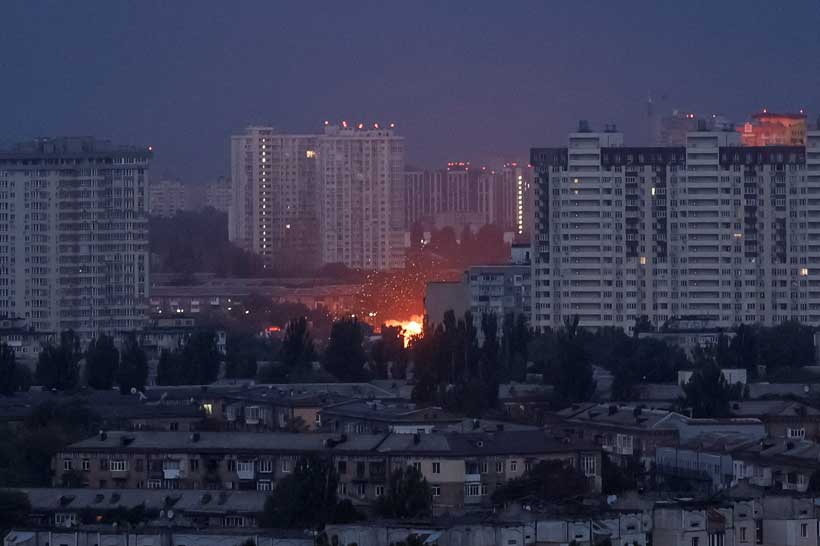Russia’s defence ministry said on Monday that its air defence units destroyed 251 Ukrainian drones overnight the majority over the country’s southwest. Of these, 61 were intercepted over the Black Sea, and one was reportedly heading toward Moscow.The figures were shared on the ministry’s official Telegram channel. Officials did not provide information on any damage or casualties, and Russia typically reports only the number of drones destroyed, not the total launched by Ukraine.
Meanwhile, Ukrainian media outlets reported a large fire at an oil depot in Feodosia, on Crimea’s Black Sea coast. The blaze was allegedly caused by a drone strike that led to a fuel tank explosion, according to RBK-Ukraine.
Why It Matters
The strikes mark one of the largest overnight drone assaults in recent weeks, underscoring how both sides continue to target energy and logistics infrastructure as the war grinds on. The reported hit on Crimea highlights Ukraine’s continued effort to disrupt Russian supply routes and operations in occupied territories.
The primary actors include the Russian Defence Ministry, which is leading air defence operations and managing the response to aerial threats, and the Ukrainian Armed Forces, which have intensified drone campaigns targeting Russian energy and military facilities. Crimean local authorities are dealing with the aftermath of the reported oil depot fire, while civilian populations in both Crimea and southern Russia remain at risk from falling debris and explosions. Additionally, international observers and media outlets, including Reuters and RBK-Ukraine, play a critical role in monitoring and verifying claims from both sides.
Future Scenario
If Ukraine sustains this level of drone warfare, Russia may further expand its air defence systems across occupied territories and around strategic infrastructure such as ports and fuel depots. In response, Kyiv could seek to enhance drone range and precision with Western assistance, extending strikes deeper into Russian territory. The ongoing drone exchanges suggest that both sides are preparing for a prolonged war of attrition, where energy facilities and logistics hubs become the main targets ahead of winter.
With information from Reuters.
